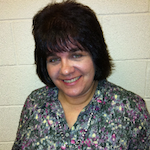GAM 2012 Blog
|
April 11 By Connie Walker |
Back to the GAM Blog | 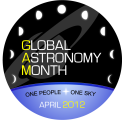 |
| The arc of the Milky Way seen from a truly dark location is part of our planet’s natural heritage. Yet, with half of the world’s population now living in cities, many urban dwellers have never experienced the wonderment of pristinely dark skies and maybe never will. |
||
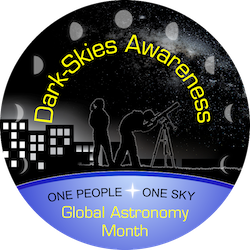
So how do you explain to them the importance of what they’ve lost to artificial skyglow? How can you make them aware that light pollution is a concern on many fronts: safety, energy conservation, cost, health and effects on wildlife, as well as our ability to view the stars? Finally, how do you convince them that it’s worthwhile to take steps, even small ones, to help redress the situation?
As I watched the International Year of Astronomy unfold in 2009, what astounded me was not only the involvement in the Dark Skies Awareness (DSA) Cornerstone Project from a large number of people worldwide, but also the creativity they brought to the table. Their efforts caused a revolution in their communities — sparked by some aspect of a DSA program but fueled by their ingenuity and sweat. The spark that was ignited then is further fueled now by participants in DSA programs occurring during Global Astronomy Month each April since IYA’s 100 Hours of Astronomy in 2009.
These DSA programs offer a platform for change in mindset and hopefully in action worldwide. I’ve come to believe that to influence cultural change effectively — to make people literally look up and see the light — we must make children a main focus, use approaches that offer involvement on many levels, from cursory to committed, and offer involvement via many venues. We must make the programs and resources as turnkey as possible, especially for educators — and provide ways to visualize the problem with simple, easily grasped and enjoyable activities.
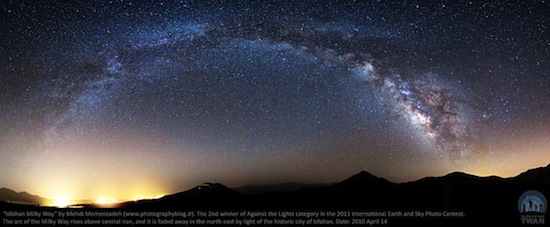
Here is a gorgeous photo of the night sky which was a 2nd place winner in the International Earth and Sky Photo Contest last year in the category of "Against the Lights". The photo was by Mehdi Momenzadeh from Iran and is called "Isfahan Milky Way". Part of the arc of the Milky Way is washed away by lights from the historic city of Isfahan, Iran.
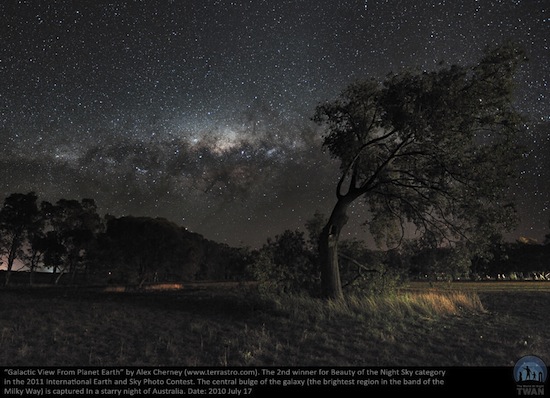
With this in mind, several dark skies activities and events were created for children and their parents and, of course, for everyone participating worldwide in Global Astronomy Month. Events include:
- listening to few-minute audio podcasts with the Dark Skies Crusader
- activities for children and adults that promote public awareness in saving energy and saving our night sky
- aa day celebrating our right to starlight as a cultural, scientific and environmental heritage (April 20)
- an international dark sky week showing how to light responsibly (April 14-20)
- a 10-day citizen-science campaign to measure levels of light pollution worldwide (April 11-20, 2012)
- a month-long photo contest on the beauty of the night sky as well as light pollution’s effect on it (deadline: April 22)
- a year-round program to preserve dark-sky observing sites.
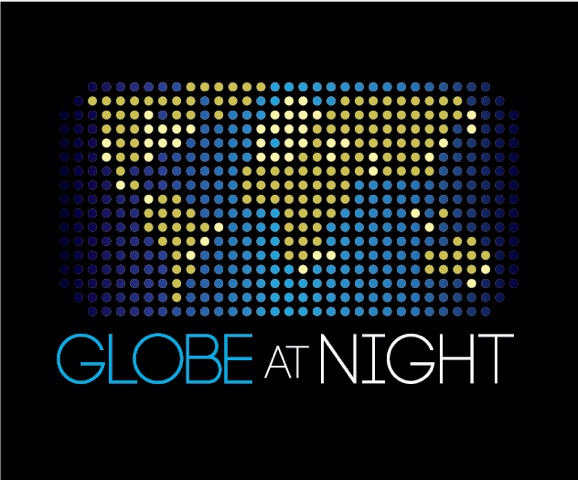
Through the Global Astronomy Month Dark Skies Awareness Programs, we have (in the order mentioned above) links to these programs and events:
Audio Podcasts on dark skies awareness
Dark Skies Rangers Activities
The World Night in Defence of the Starlight
International Dark Sky Week
GLOBE at Night Citizen-Science Campaign
The International Earth and Sky Photo Contest
One Star at a Time
To illustrate the power children have in making a difference in their community, we provide the following story.


Here are the two sides of the GLOBE at Night 2012 postcard which would be nice to place on the blog as well
The GLOBE at Night citizen-science campaign (www.globeatnight.org) encourages people all over the world to record and report the brightness of their night sky by matching a constellation like Orion’s appearance with star maps of progressively fainter stars. One school district in Indiana, USA, took this simple concept to a whole new level. Thousands of its students observed the constellation of Orion from their backyards — amassing 20% of the 2009 Globe at Night data — but they did not stop there. They asked the question: how much of our night sky have we lost?
To find the answer, the students visualized the sky with a 3-D model of their GLOBE at Night sky measurements. First they stacked 35,000 LEGO® blocks to represent a pristinely dark sky in which 1000s of stars could be seen, and then they took away 12,000 blocks according to their GLOBE at night sky measurements. What remained corresponded to a sky 9 times brighter than the truly dark ideal. The students presented their findings to local leaders and were honored for their efforts (details are at www.LetThereBeNight.com).
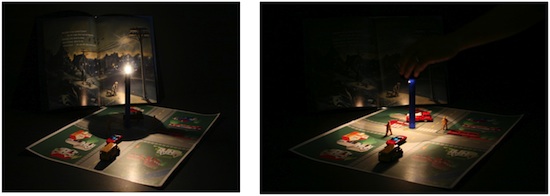
Here is a picture of a very graphic interactive demonstration that illustrates why it is important to light responsibly. It is the "Light Shielding Demo" which is the foundational centerpiece of the "Dark Skies Rangers" activities. (They go hand-in-hand with the GLOBE at Night campaign.)
By encouraging children to reconnect with the night sky and learn about light pollution, children could be inspired to protect dark skies all their lives. I think back to how the anti-littering and anti-smoking campaigns have made a positive difference in many parts of the world. It is hopeful for dark skies awareness that these young stargazers will ultimately draw a similar conclusion about their world –that the night sky is an irreplaceable natural resource worth protecting.
|
|
An astronomer by training, Connie Walker serves as the Senior Science Education Specialist for the National Optical Astronomy Observatory in Tucson, Arizona. Connie chaired the national and international working groups for the IYA Dark Skies Awareness Cornerstone Project, which were awarded the International Dark-Sky Association (IDA) Executive Director’s Award for their efforts in 2009. In 2011, Connie was awarded the IDA Hoag-Robinson Award for her contribution to educating the public on light pollution, its effect and solutions. She chairs the IDA education committee and the Global Astronomy Month DSA committee and is a member Board of Directors of both IDA and the Astronomical Society of the Pacific. |







